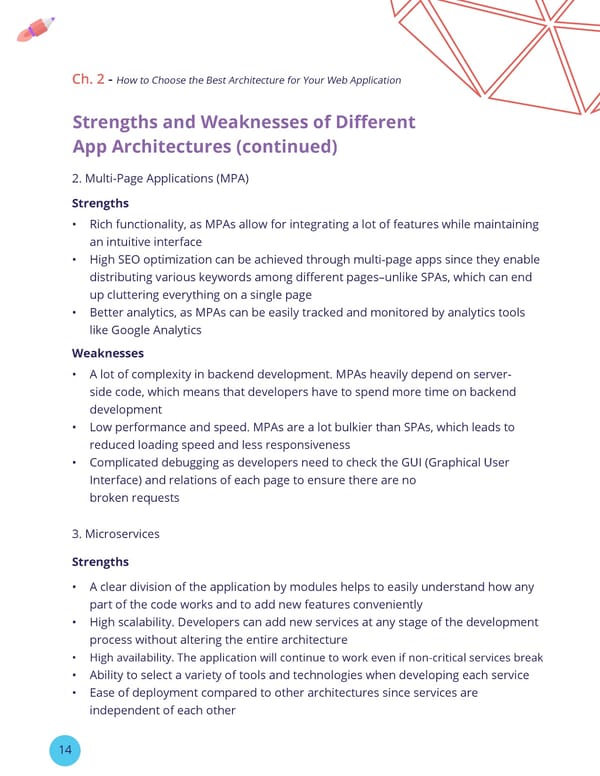Ch. 2 - How to Choose the Best Architecture for Your Web Application Strengths and Weaknesses of Different App Architectures (continued) 2. Multi-Page Applications (MPA) Strengths • Rich functionality, as MPAs allow for integrating a lot of features while maintaining an intuitive interface • High SEO optimization can be achieved through multi-page apps since they enable distributing various keywords among different pages–unlike SPAs, which can end up cluttering everything on a single page • Better analytics, as MPAs can be easily tracked and monitored by analytics tools like Google Analytics Weaknesses • A lot of complexity in backend development. MPAs heavily depend on server- side code, which means that developers have to spend more time on backend development • Low performance and speed. MPAs are a lot bulkier than SPAs, which leads to reduced loading speed and less responsiveness • Complicated debugging as developers need to check the GUI (Graphical User Interface) and relations of each page to ensure there are no broken requests 3. Microservices Strengths • A clear division of the application by modules helps to easily understand how any part of the code works and to add new features conveniently • High scalability. Developers can add new services at any stage of the development process without altering the entire architecture • High availability. The application will continue to work even if non-critical services break • Ability to select a variety of tools and technologies when developing each service • Ease of deployment compared to other architectures since services are independent of each other 14
 The Non-Technical Founder's Guide to Building an App | CrowdBotics Page 13 Page 15
The Non-Technical Founder's Guide to Building an App | CrowdBotics Page 13 Page 15